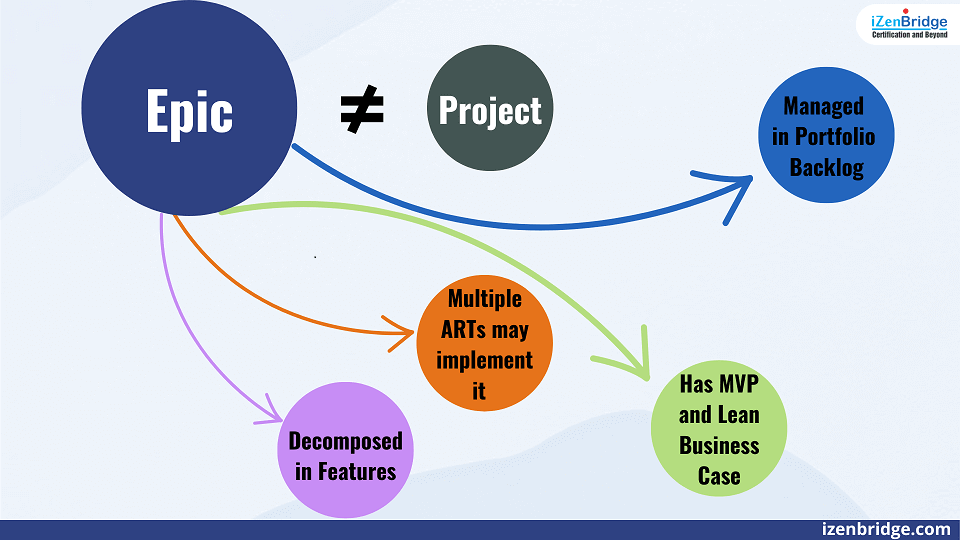

SAFe (Scaled Agile Framework) is a framework used for delivering enterprise-level software applications and systems. In this framework, Epic is a critical element that plays a crucial role in ensuring the movement towards the strategic objective. The Epic falls under the portfolio layer of SAFe, which is the top layer, and is responsible for ensuring the alignment of the organization’s initiatives with its strategic goal.
An Epic is a container for large ideas or initiatives that are critical to the organization’s success. These ideas may come from various sources such as emerging opportunities, internal discussions, or government compliance. These ideas initiate a trigger that signifies the importance of the initiative and may result in a desired outcome. In SAFe, the Epic acts as a container to hold this big idea, and the idea is refined by putting more business case, such as a lean business case. The Epic is reviewed by the Lean Portfolio Management group to determine if it makes sense to pursue the initiative.
SAFe is based on continuous inspect and adapt learning, and therefore, it is recommended to identify a Minimum Viable Product (MVP) part inside the Epic. This helps in validating the hypothesis made during the implementation phase and ensures that the Epic is aligned with the organization’s strategic goal. The MVP part is worked on first, and based on the learning, the scope may be adjusted.
The Epic in SAFe is different from the generic agile Epic. An Epic in SAFe is not just large, but significantly large and may require multiple PIs (Program Increments) and involvement from multiple value streams. There could be multiple Agile Release Trains working on different parts of the Epic from different value streams. For example, in the credit card business, launching a product for a particular segment of customers may require system changes, and this would be considered an Epic in SAFe.
An Epic does not have a definitive start and end date, as opposed to a project. The Epic goes through a flow and is prioritized in the Portfolio Kanban system and Portfolio Backlog throughout its lifecycle. Unlike projects, an Epic does not have a temporary team. The team is not formed based on the new idea, but instead, the themes that are already formed in different value streams take up the Epic. The Epic usually focuses on the outcome to be achieved, and the scope is flexible, unlike a project which has a fixed scope. The MVP part is identified early and worked on first, and based on the learning, the scope may be adjusted.
| Epic | Significantly Large Initiative |
| Done | Done when Lean Portfolio Management finds the objectives are met. |
| Owned by | Epic Owner before the start of Implementation, later by the Product Manager |
| Implementation | Implemented Incrementally (Features and User Stories) by ARTs is more than on PIs |
| Evaluated using | Portfolio Kanban System |
| Stored In | Portfolio Backlog |
| Prioritized | Prioritized using WSJF |
In conclusion, the Epic in SAFe is a significant initiative that plays a crucial role in ensuring the alignment of the organization’s initiatives with its strategic goal. It acts as a container for large ideas and is refined by putting more business case. The Epic goes through a flow and is prioritized throughout its lifecycle and focuses on the outcome to be achieved. The MVP part is identified early and worked on first, and the scope may be adjusted based on the learning.
References: Epic – Scaled Agile Framework
| Name | Date | Place | – |
| SAFe Certification and Training | 19 – 20 April 2025 | Chennai | More Details |
| SAFe Certification and Training | 26 – 27 April 2025 | Bangalore | More Details |